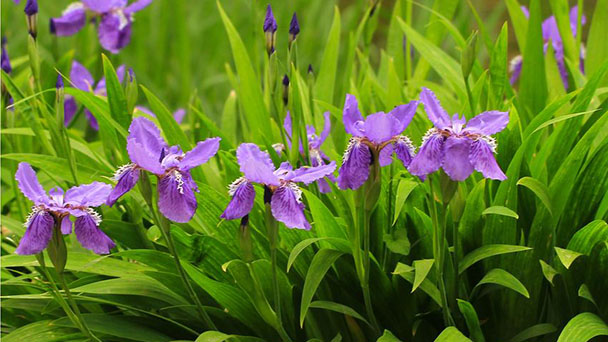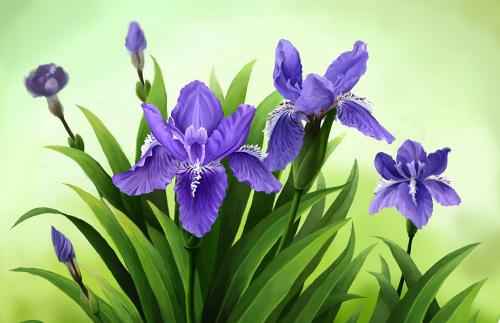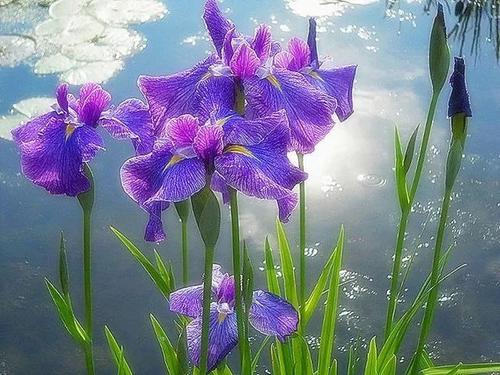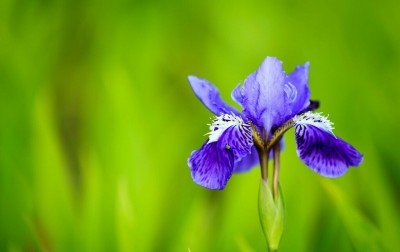How to grow Iris L
Written by Maggie
Nov 17 2020

When cultivating Iris L, the soil can be mixed with leaf mulch, garden soil, river sand, and perlite. During the cultivation process, the plants can be watered according to the change of seasons, usually keeping the soil moist. Iris L is a light-loving plant. It is best to place the plant in an environment with sufficient light during cultivation, and properly fertilize the plant during the growth period.
Iris L picture

Method of breeding Iris L
1. Prepare the soil
The plant type of Iris L is very good, and people often use it as ornamental flowers. How to raise Iris L? The first step in cultivating Iris L is to prepare the soil. Iris L likes to be in moist, well-drained, humus-containing soil Grow. The soil can be mixed with leaf mulch, garden soil, river sand and perlite during cultivation.
2. Water reasonably
Iris L has strict requirements for water. The plants can be watered according to the change of seasons during cultivation. Iris L grows faster in spring and autumn. At this time, watering the plants once a week is enough for cultivation. Water evaporates quickly in summer, so water the plants once every two days; keep the soil moist during cultivation in winter.

3. Sufficient light
Iris L is a light-loving plant. It is best to place the plant in an outdoor ventilated and well-lit environment during cultivation. In summer, it is best to place the plant in an indoor semi-shady, ventilated environment. If you encounter long-term cloudy and rainy days during breeding, you can use light lamps instead of sunlight to irradiate plants, and the effect is similar to sunlight.
4. Apply fertilizer in time
Iris L has a high demand for fertilizers during the growth process. It is necessary to topdress the plants with chemical fertilizers during the growth period. It is best to dilute the fertilizer with water before each application to reduce the fertilizer concentration. Fertilizers should be applied to the plants once a year during breeding. Nitrogen, phosphorus and potassium fertilizers can be applied this time, and the amount of fertilizer applied each time should not be too much.

Latest Updated
- Benefits of Bugleweed - 7 Science-backed Health Benefits
- Bugleweed Dangers & Side Effects - Is It Poisonous?
- How to Plant Evergreen Trees - What You Should Know
- When to Plant Evergreens - Grow Guide for Evergreen Trees
- 12 Wonderful Evergreen Shrubs for Your Garden
- 12 Popular Evergreen Plants with Pictures for Beginners
- When And How To Prune A Lilac Bush Like a Pro
- How to Grow & Care for Lilac Vine (Hardenbergia Violacea)
- Japanese Lilac Tree (Syringa Reticulata) Care & Propagation Guide
- Shumard Oak Pros and Cons - What to Know
Popular Articles
- Winter maintenance of Antirrhinum Majus
- How to Grow Terminalia Mantaly Tree
- How to Grow and Care for Crossostephium Chinense
- How to grow Antirrhinum Majus in spring
- Peristeria Elata (Dove Orchid) Profile: Info & Care Guide
- Underwatered Snake Plant (Sansevieria Trifasciata) - Signs And How To Fix
- How to Care for Brazilian Jasmine Plant (Mandevilla Sanderi)
- How to Grow & Care for Graptopetalum Purple Delight in Summer
- Rosa Chinensis (China Rose): Plant Growing & Care Tips
- How to Care for Baby Sun Rose (Aptenia Cordifolia)